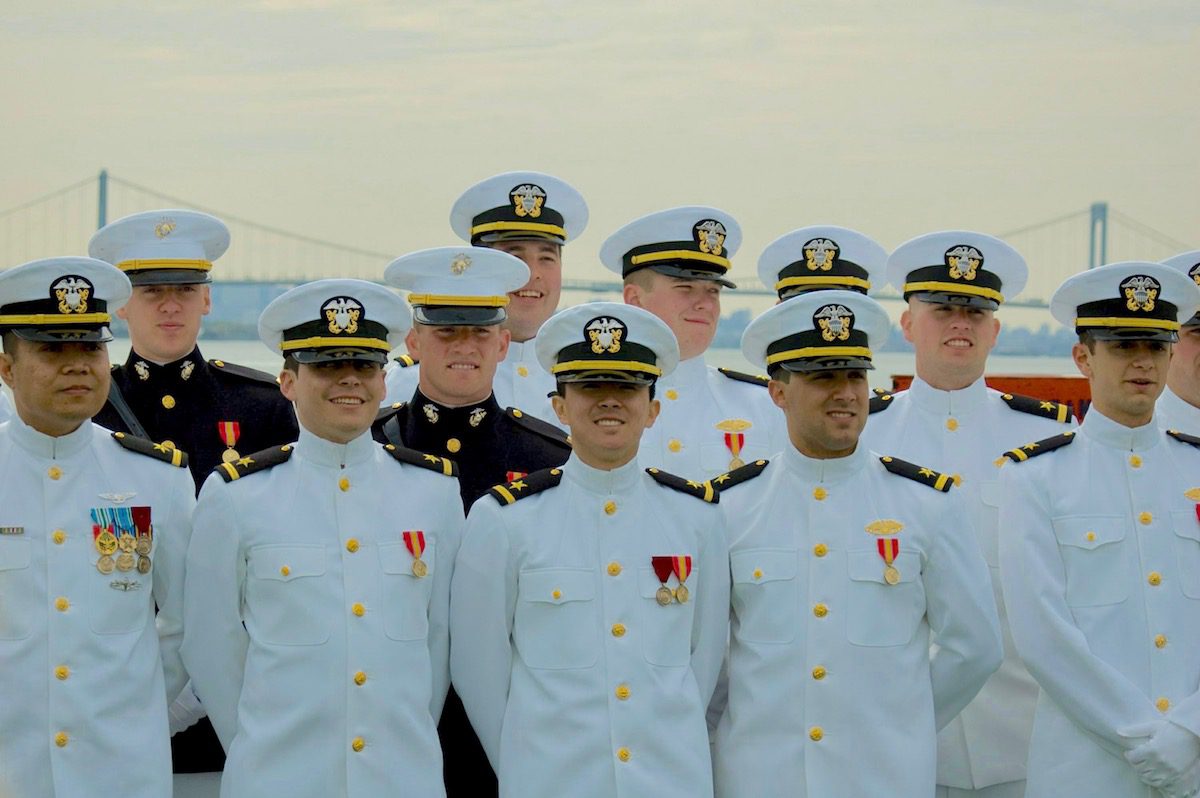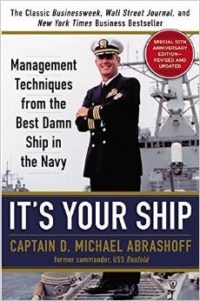Was The World’s ‘Northern-Most Island’ Erased From Charts?
by Kevin Hamilton (University of Hawaii) In 2021, an expedition off the icy northern Greenland coast spotted what appeared to be a previously uncharted island. It was small and gravelly,...


, Bronx New York. Image via SUNY Maritime
By CDR Joe Tenaglia, USN (Ret) – Four ships in four years – not to mention USS Antietam grounding and the USS Fitzgerald collision – apparently due to breakdowns in seamanship, something is wrong.
Having served for a combined 36 years in the Navy and the civilian Military Sealift Command, I have had the opportunity to compare both systems of grooming deck watch standers. In my opinion the surface Navy expects too much too soon from its surface junior officers.


Initial sea tours on Navy combatants is an exercise in surviving a pressure cooker. One has to be a division officer (sailors and equipment), bridge, engineering , in-port watch standers, finish surface warfare qualifications, navigate constantly around the globe in ever changing environment, while trying to get ones feet on the ground. Standing watch on the bridge is Often a break from the endless work. SWO’s brag about lack of sleep and constant fatigue. They are known to eat their young. I did it so why can’t you is the mentality. With a reduced Navy the deployments never cease. Most cannot wait to get off the ship. In this environment people break down.
In officer accession programs surface skills are not considered sexy like aviation, submarines, or special ops. In fact the surface navy is too often the last choice for many new officers. Seamanship is not the focus of officer training programs. Aviators are not expected to get familiar with the plane and then learn on the job to see if they can do it.
Update: Search Continues for Missing John S. McCain Sailors
Contrast that with a merchant marine licensed officer. Most 3rd mate sea tours consist of 8hrs/day of bridge watch standing only, protected by rest/work rules. While challenging the environment is much more benign, not as fast paced and most of the senior licensed officers have many years of experience of focused at sea experience to draw on and time to mentor young cadets one-on-one.
Merchant Marine Academies and licensing requirements focus on seamanship skills to pass the rigorous USCG licensing exams, Summer sea tours focus on learning navigation skills, not so with Navy. New 3rds, make six figure salaries and are compensated well with OT. They serve an average four months at sea then go home, usually for more training but they are not living on the pressure cooker, which is the ship.
There are many similarities and many differences between the Navy and Merchant Marine. Each can learn from each other. Maybe new Surface Officers should spend their first two years at sea in a watch standing role to learn navigation, weapons warfare skills and engineering. Running a division of sailors is onerous by itself for a 20 something if only because of the paperwork requirements to take care of your people.
A requirement for surface officers to prepare for and pass the 3rd mate USCG licensing exam is excellent preparation for seamanship skills.
There is something wrong in the surface navy, this is the fourth seamanship disaster in as many years, with the loss of a USN minesweeper on a reef in the Phillipines, capture of two USN patrol boats in Iranian waters, now the collisions of two DDG’s, which are a mainstay of our sea based anti-missile capability at the height of tensions with North Korea (I could go on).
Slow things down, allowing time time for junior surface officers to gain more experience and emphasis on basic seamanship skills may be an answer. They are expected to do too much too soon, and all the technology in the world does not solve that.
Joe Tenaglia is a former Special Operations Officer with a specialty in Explosive Ordnance Disposal, Intelligence, Counter-Terrorism. and Maritime Security. He graduated from Pennsylvania State University after completing a 4-year NROTC program and was commissioned as a Naval Officer. He was qualified as a Surface Warfare Officer, Navy Diver, Naval Parachutist, Master EOD Technician, Intelligence Specialist, and a marine ammunition logistician . He retired as a Commander with over 20 years of distinguished service. Since his retirement from active duty he has served as an Anti-Terrorist Training Officer for the Military Sealift Command. He specialized in training licensed and unlicensed crews, military and law enforcement personnel in maritime anti-terrorism measures and response, shipboard security tactics, basic small arms and compliance with ISPS/MTSA security regulations. He can be reached at [email protected]
Join the gCaptain Club for curated content, insider opinions, and vibrant community discussions.


Join the 105,826 members that receive our newsletter.
Have a news tip? Let us know.
Access exclusive insights, engage in vibrant discussions, and gain perspectives from our CEO.
Sign Up




Maritime and offshore news trusted by our 105,826 members delivered daily straight to your inbox.



Essential news coupled with the finest maritime content sourced from across the globe.
Sign Up